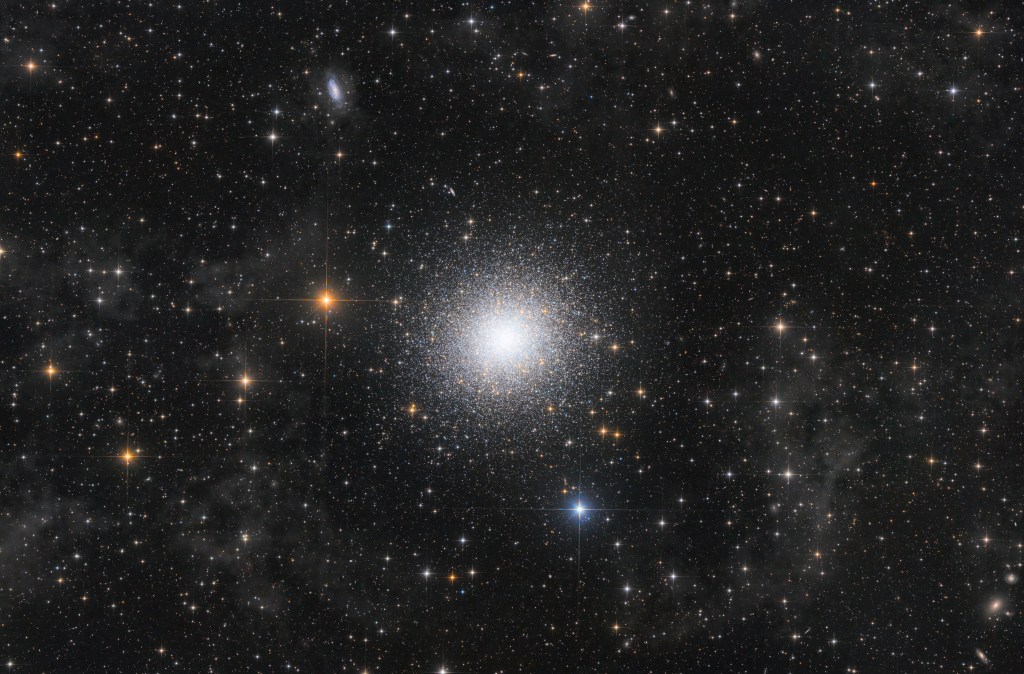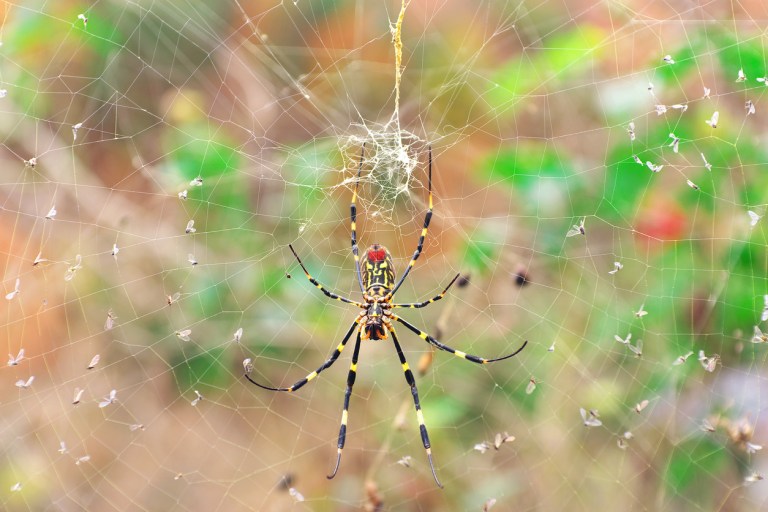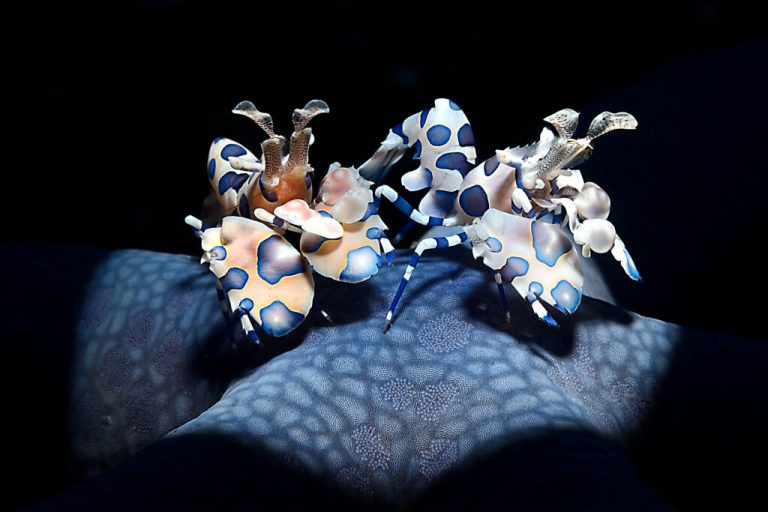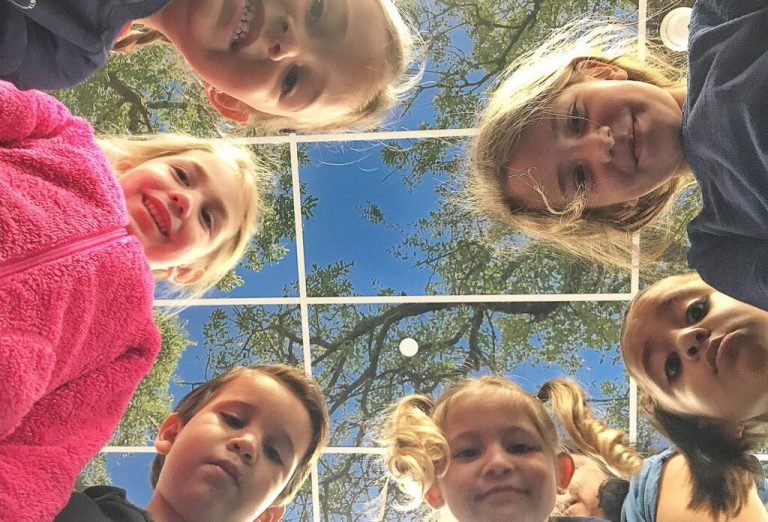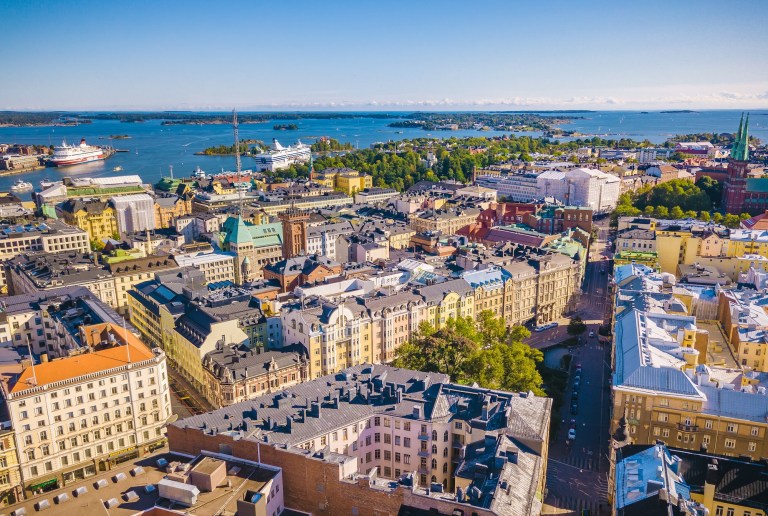Out of more than 5,500 submissions from 69 countries, the 11 winners of the Royal Observatory Greenwich’s ZWO Astronomy Photographer of the Year competition have been selected — and the stunning shot above claimed the top spot in the Stars & Nebulae category.
Captured by German photographers Julian Zoller, Jan Beckmann, Lukas Eisert, and Wolfgang Hummel, the image depicts the Great Hercules Cluster, one of the most striking globular clusters in the northern sky.
The title of overall winner was awarded to an exceptionally detailed shot of the Andromeda Galaxy. Images of our galactic neighbor are nothing new, but “The Andromeda Core,” captured with a long focal-length telescope by China’s Weitang Liang, Qi Yang, and Chuhong Yu, highlights the structure of Andromeda’s central region and its surrounding stars.
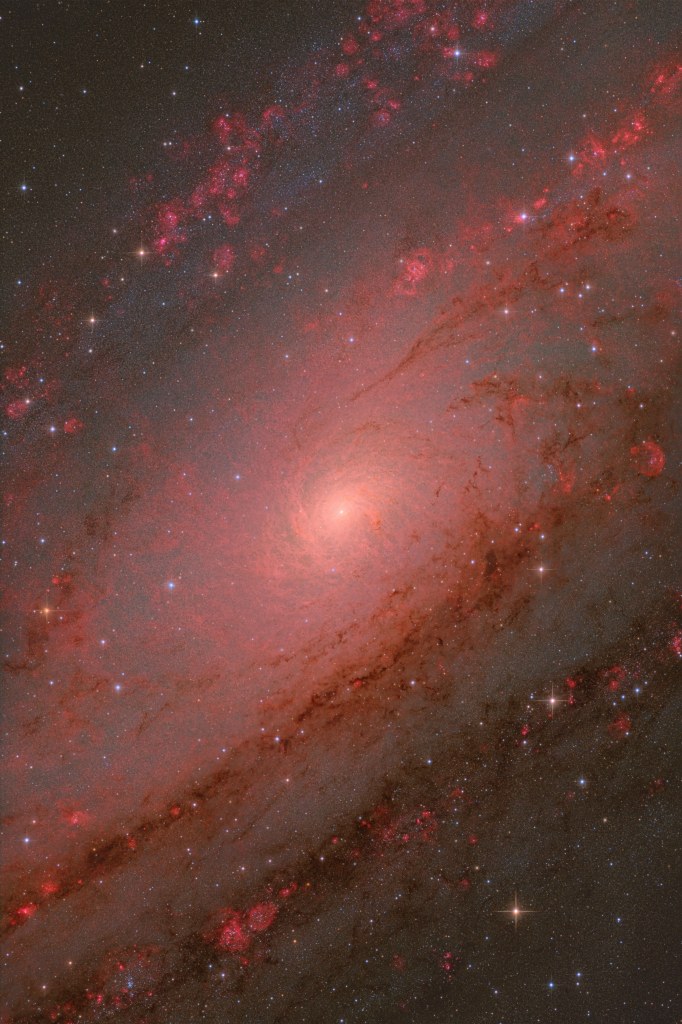
“Not to show it all — this is one of the greatest virtues of this photo,” judge László Francsics said in a news release. “The Andromeda Galaxy has been photographed in so many different ways and so many times with telescopes that it is hard to imagine a new photo would ever add to what we’ve already seen. But this does just that, an unusual dynamic composition with unprecedented detail that doesn’t obscure the overall scene.”
Sam Wen, founder of astrophotography equipment company ZWO, added that the detailed look at the galaxy “truly took my breath away.” He noted that capturing the shot not only required first-rate equipment and exceptional seeing conditions at the AstroCamp Observatory in Nerpio, Spain, but also a “tremendous amount of patience and perseverance.”
The masterminds behind “The Andromeda Core,” which was also won in the Galaxies category, will receive around $13,500 (10,000 pounds). In the release, they commented that they were thrilled to “have the opportunity to bring [their] work and the splendor of the universe to everybody.”
The complete collection of recognized shots, which were awarded titles of “Winner,” “Runner-Up,” and “Highly Commended” in 11 categories — including Aurorae, Our Sun, and Skyscapes — will go on display at an exhibit in London’s National Maritime Museum beginning tomorrow. But if you can’t make it there, keep scrolling for some of the highlights.
Winner, Aurorae Category
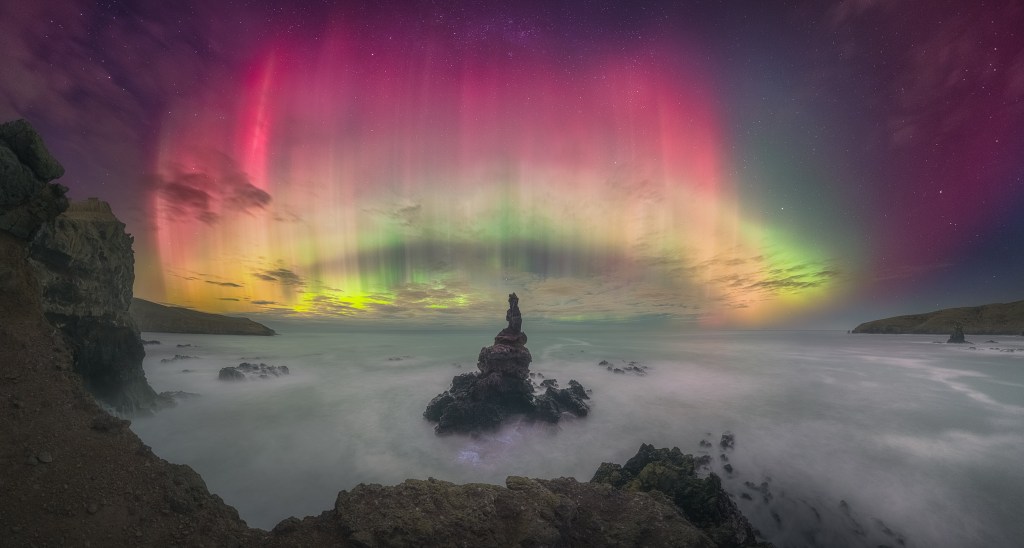
“Crown of Light” by Kavan Chay (New Zealand)
“The image was taken during the G5 storm, the most extreme level of geomagnetic storm, in May. The reds were a level of intensity the photographer had never experienced.”
Winner, Our Moon Category

“The Trace of Refraction” by Marcella Giulia Pace (Italy)
“This image captures the phenomenon of atmospheric refraction, where moonlight passes through dense layers of Earth’s atmosphere near the horizon, bending in a manner similar to light rays through a prism. Additionally, the redness of the Moon can be explained by a process known as Rayleigh scattering [smaller particles in the atmosphere scatter shorter wavelengths of light, resulting in longer wavelengths, namely red, being more predominant].”
Winner, Our Sun Category

“Active Region of the Sun’s Chromosphere” by James Sinclair (USA)
“The chromosphere is the most picturesque part of the Sun. Composed of hydrogen and helium plasma, it is manipulated by the intense and tangled magnetic fields of the Sun. The Sun’s chromosphere does not just change day by day, it changes second by second, which is why solar astrophotographers become obsessed with it.”
Highly Commended, People & Space Category
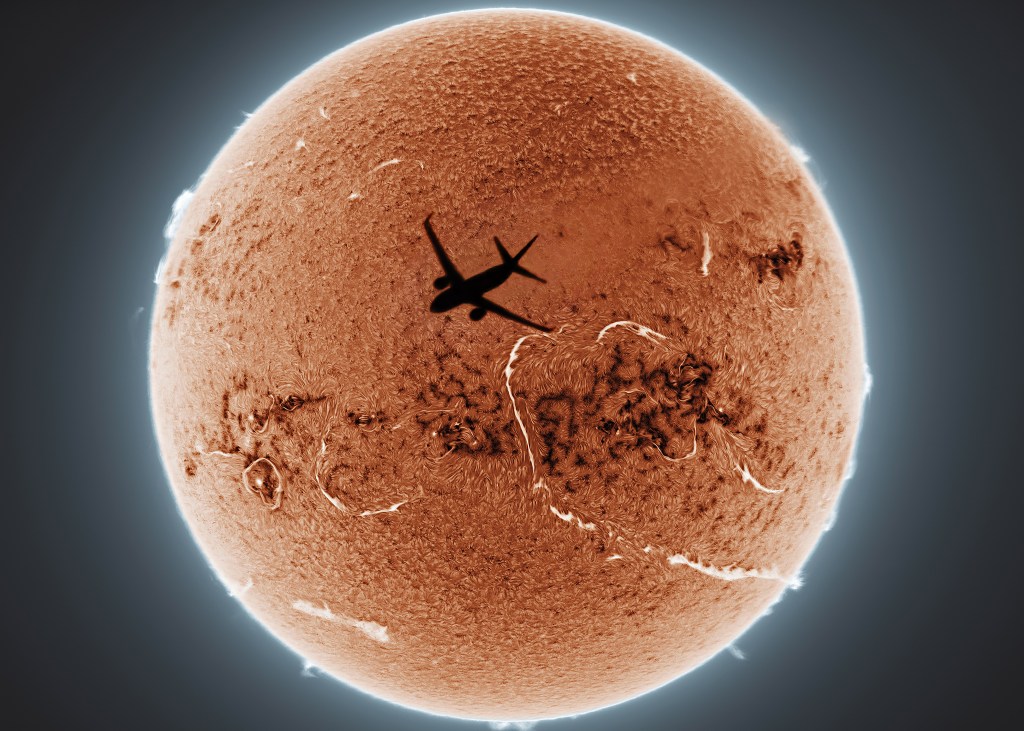
“Instant and Eternal” by Zhang Yanguang (China)
“During a routine time-lapse observation of the solar chromosphere [thin, reddish layer of the Sun’s atmosphere above the visible surface], Zhang Yanguang captured a serendipitous moment frozen in time.”
Winner, Planets, Comets & Asteroids Category
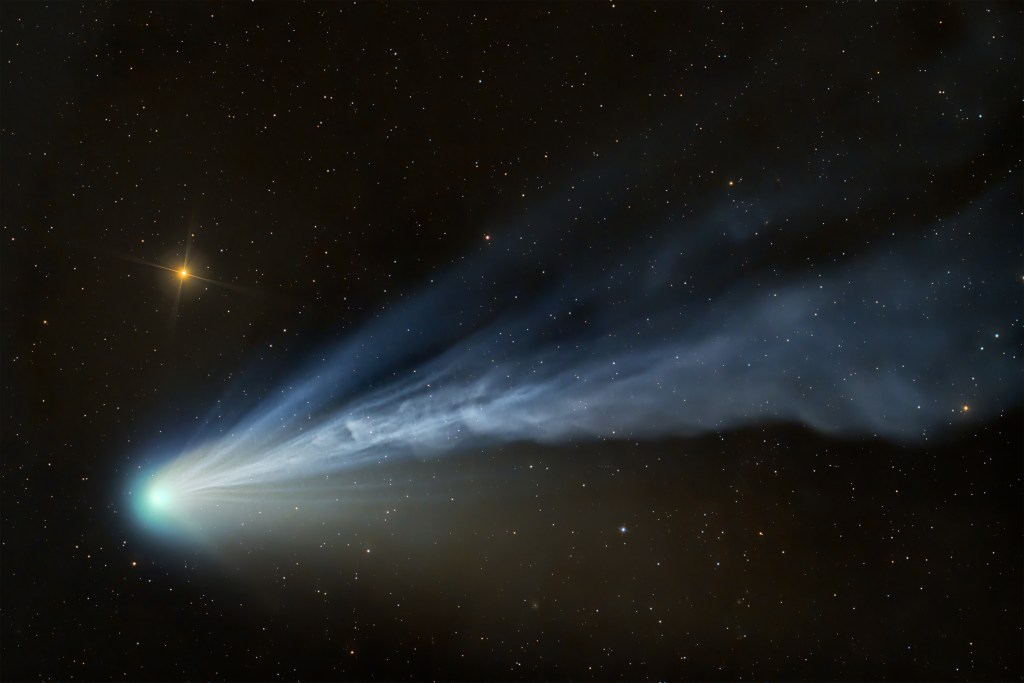
“Comet 12P/Pons−Brooks Taking a Final Bow” by Dan Bartlett (USA)
“Comet 12P/Pons−Brooks reacted visibly to the intensified solar winds associated with the current solar maximum, creating a spectacle of tail dynamics and colourful hues expelled by its nuclear coma, the bright cloud of gas around the comet’s center.”
Winner, Skyscapes Category
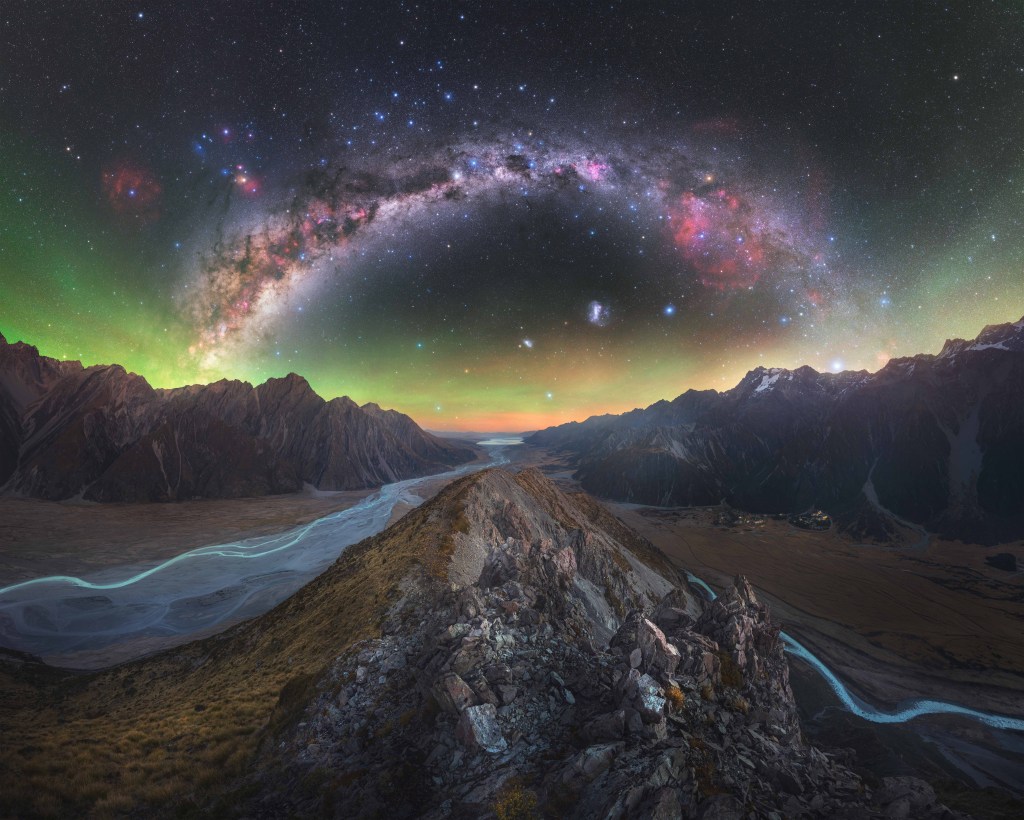
“The Ridge” by Tom Rae (New Zealand)
“This is the largest panorama Tom Rae has ever captured, with the full resolution image containing over a billion pixels from 62 images stitched together. The photograph captures the twin glacial rivers with the Milky Way core off to the left of the image, as well as the famous Southern Cross and other pointers high in the center sky.”
Runner-up, Stars & Nebulae Category

“Veil of Stars” by Zixiong Jin (China)
“This image showcases the iconic NGC 6960, also known as the Veil Nebula. To capture its intricate details and vivid colours, Zixiong Jin used a telescope, a cooled monochrome camera, an equatorial mount and a motorized filter wheel equipped with H-Alpha, OIII, SII, Red, Green, and Blue filters. For this particular target, the photographer cropped from a larger mosaic to better illustrate the concept and shape of the ‘veil’ by using a unique composition.”
Winner, ZWO Young Astronomy Photographer of the Year
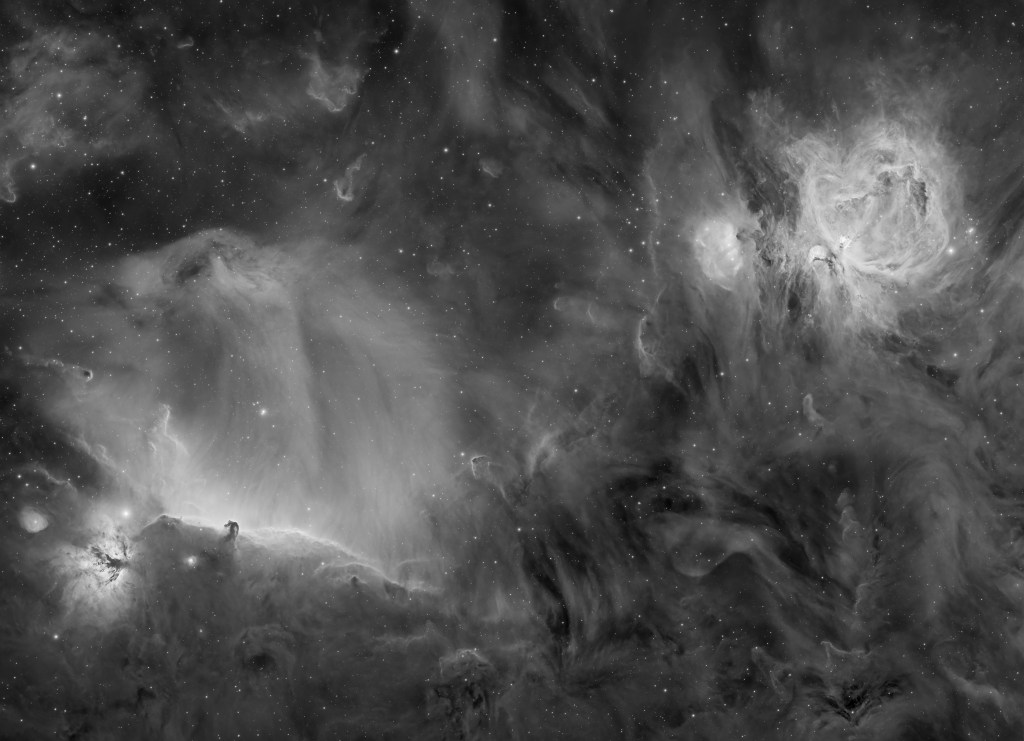
“Orion, the Horsehead and the Flame in H-alpha” by Daniele Borsari (Italy)
“On the lower left lies the Horsehead Nebula, also known as Barnard 33. This dense dark cloud of gases hides the light coming from the emission nebula IC 434 and creates the apparent shape of a horse’s head. A little to the left we find the Flame Nebula, NGC 2024. The star responsible for the illumination of this nebula, IRS2, is located behind dust and gases and is therefore not visible in the optical spectrum. And finally, in the upper-right of the image is M42, famously known as the Orion Nebula. This nebula is a huge cloud of dust and gas where a lot of new stars are born. The energy released by the four central stars (the Trapezium Cluster) shapes the nebula, ionizing the gas components.”
RELATED: See All the Winning Images in the 2024 Astronomy Photographer of the Year Contest
